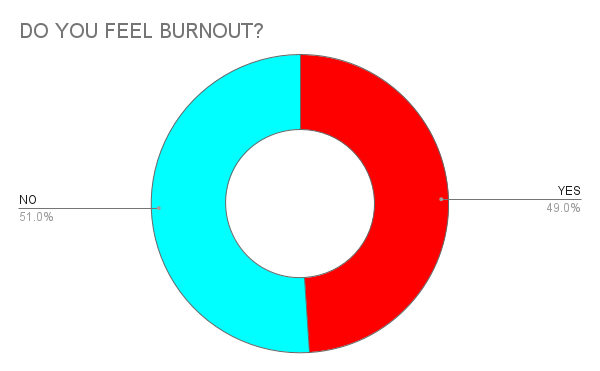Your efforts to be fully staffed are being fought on two fronts. The first is trying to fill your open positions. The second is keeping the employees you’ve already hired. With nearly everyone short-staffed, chances are your existing staff is working harder and longer to get the job done. Overworked workers are picking up a lot of the slack and they are suffering from burnout.
According to the World Health Organization, burnout is a syndrome resulting from workplace stress that has not been successfully managed. Companies without systems to support the well-being of their employees have higher turnover, lower productivity, and higher healthcare costs, according to the American Psychological Association (APA). Another study by the APA claims that burned-out employees are 2.6 times as likely to be actively seeking a different job, 63% more likely to take a sick day, and 23% more likely to visit the emergency room. These numbers show burnout is a terrible enemy to your success at work.
A thousand workers were surveyed by Ipsos in early April of 2022 and the studies amplify what many managers already know: this pace of burnout is not sustainable. These charts show what is causing burnout, and what employees think would help alleviate the problem.



Burnout is being felt most by women with 52% reporting feeling burnt out.. Demographically, the highest number of those suffering from burnout remains among young workers where 53% of those aged 18-34 have started to feel the effects of burnout. These employees are prone to leave their jobs in the next 12 months, a 33% increase from August of 2021.
You get it. Everyone’s exhausted from the last couple of years. Their basic needs aren’t being met and they’re losing balance between work and everyday life. So what can you do? The Ipsos survey asked their respondents “what would help ease your burnout?”
About 70% of those surveyed said that a four-day workweek would help. Flexibility and working from home are also highly sought-after job benefits. Some businesses may be able to offer those to their employees, but many of those benefits would require a logistics reshuffling of epic proportions by most companies. Short of some of these lofty goals, there are a few things you can do right now to try and minimize burnout with your staff.
Extra breaks – Even giving an employee a couple of extra fifteen-minute breaks through the course of a week can go a long way. It shows that you are an empathic employer by giving employees a few extra mental health breaks throughout the week.
Ask the right questions – Start with smaller departments and ask, ‘If I could wave a magic wand and make your jobs easier, what would that look like?” This should help you figure out priorities of what needs to be done first to improve your staff’s workload. Employees shouldn’t be expected to have all the solutions, but they can tell you what is not working, and that can be invaluable. Don’t make assumptions. Have in-person conversations.

Solving Little Problems – Tiny little things that go wrong at work wear people down. One day, there’s coffee in the break room or the vending machine is full and the next day it is not. Burnout happens when presupposed features in our day-to-day work lives are missing or taken away. Maybe the company has spent money on something the employees didn’t ask for or even use. Employees could view such an action as impractical, a waste of money, and a poor reflection of the organization. Satisfaction and dissatisfaction are not on a continuum with one increasing as the other diminishes but are instead independent of each other. It’s important to look at each independently and work to keep the little things running smoothly.
Empathy – If an employee is missing quotas, deadlines aren’t being met, seems to be in a bad mood, or starts coming in late–it all may be signs of burnout. Keep in mind that people can have burnout in their private lives as well. That can carry over into work. Don’t assume that there isn’t burnout just because things aren’t busy at work and don’t take it personally that the work environment is leading to burnout.
Access to Resources – Burnout can cause a lot of health problems, both physical and mental. It’s important to make sure your team is connected to resources. Hopefully, you have wellness programs in place that can help your staff work out burnout issues. You should have a list of external sources that can provide support in mental and physical health. Encourage employees that are feeling burnout to utilize these services.

Take Care of Yourself – If you’re a manager feeling burnout yourself, it can be contagious. Setting a positive example of how to manage burnout can help your team understand how to deal with their own struggles. It’s ok for you to be vulnerable too. Managers are not superhuman. It’s ok to let the team know you feel the same issues as they do. Take a mental health day and let your team know it. Here’s some advice on how to deal with burnout as a manager.
The best way to stop burnout is to get in front of it. Implementing some of these action items and tips along with focusing on keeping workloads balanced can minimize the effects of burnout and create a stronger bond with your staff and improve your company culture.


